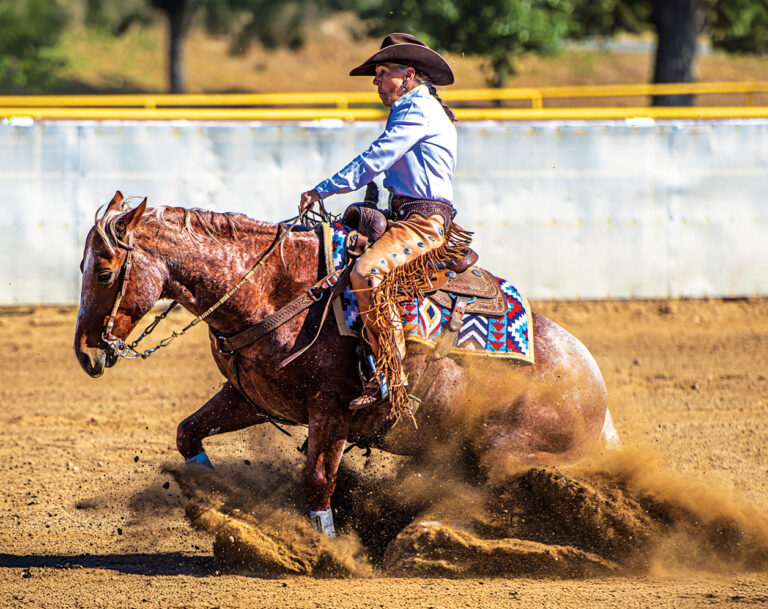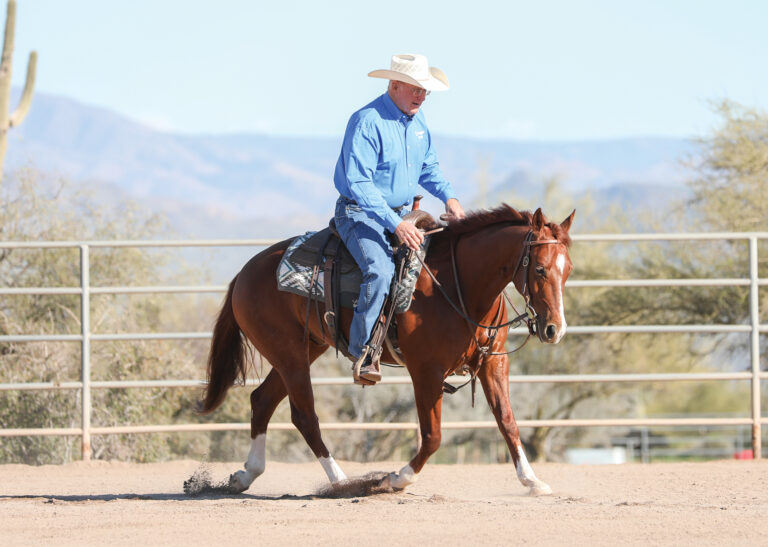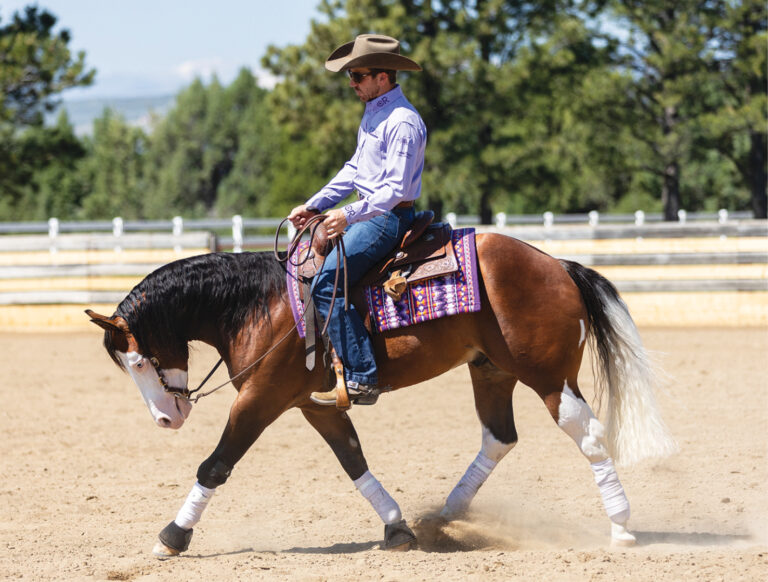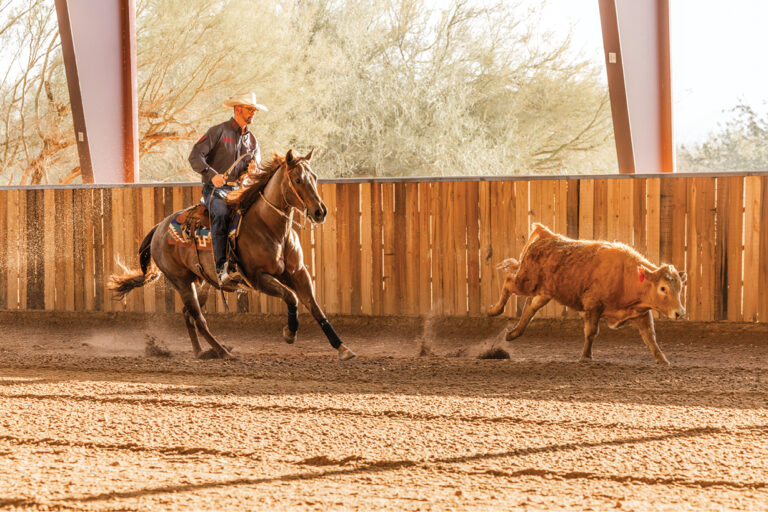Teaching horses to stay standing tied is a critical—but often overlooked—part of the horse training process, no matter what you plan to do with your equine partners. Every horse I’ve got will tie up anywhere, any time, and won’t try to pull back. Using patience poles, we’ve taught ours they need to be there, they don’t know how long they’ll be there, so they just relax. I’m going to tell you how our patience poles are constructed, why I like to use them, and how patience poles can affect a horse’s behavior under saddle.
WATCH: Al Dunning: How and Why to Be an Engaged Rider
RELATED: 3 Rules for Dealing with Quirky Horses
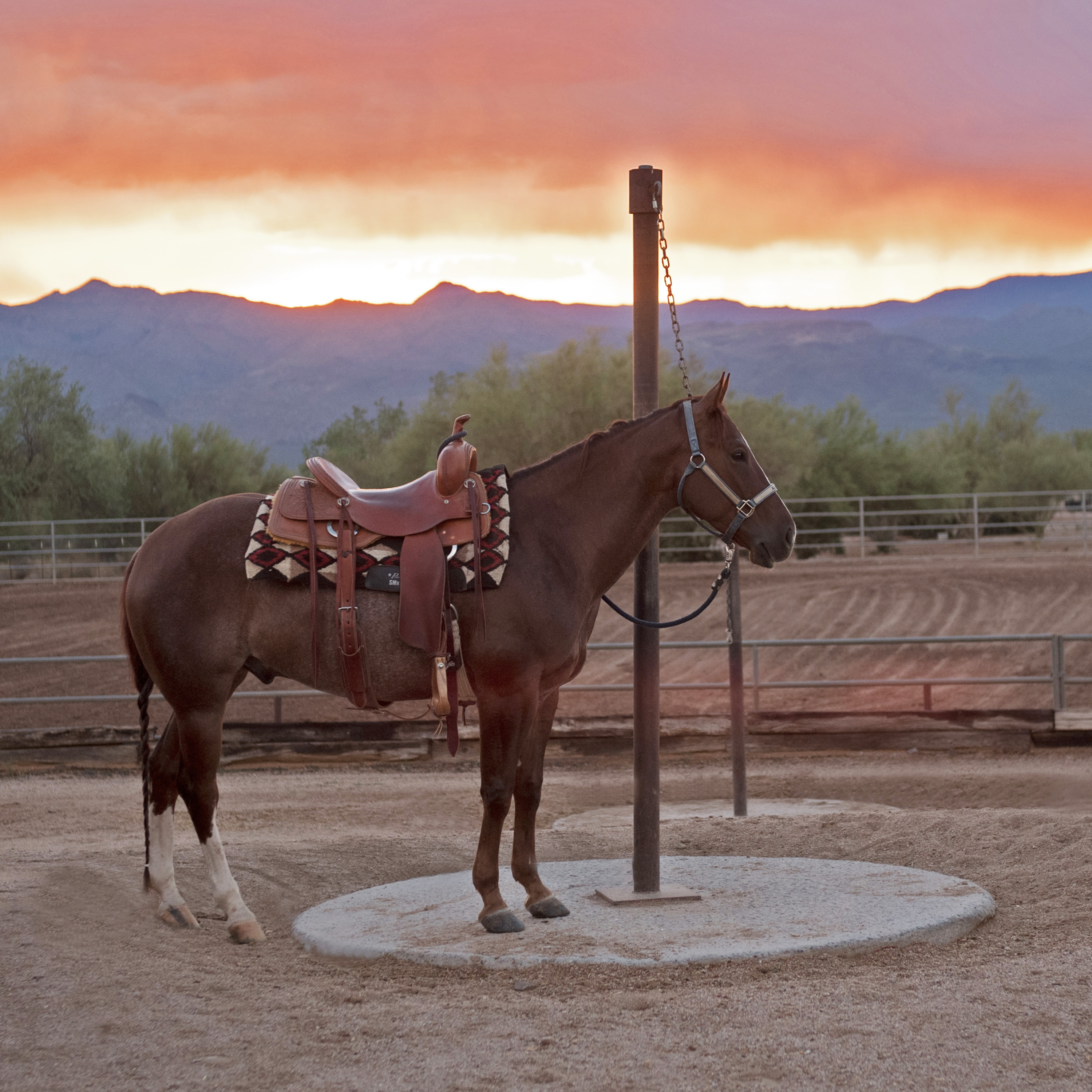
Build your own patience pole.
12-foot long metal pole
Optional: breakaway halter
What is a patience pole?
My preferred method of teaching a horse to stand comfortably tied is with a patience pole—usually made from a metal pipe with a rotating collar at the top, and a chain that attaches to the halter with a bull snap. These poles are usually 12-feet in length, with three feet set into the ground with concrete or a post-pounder for serious stability.
READ MORE: Horse Barn Plans
How to use a patience pole
I like to introduce a patience pole early in the training process, tying horses there an hour before and an hour after each ride. If you have a spoiled horse or one that’s afraid to be away from their friends, tie a companion somewhere near the horse until he gets used to the post. I’ve rarely had a horse pull back on a patience pole because they can generally see around it, but use caution as your horse adjusts to the situation.
What standing tied teaches a horse
Patience poles are part of my training process because they separate a horse from the rest of the horses on the property, teaching them to stand patiently and not paw. It takes them out of their stalls to acclimate them to their surroundings. They see the tractor go by, they see birds flying, and all the activity on the place. Horses treated like house plants, who just stand in their stalls all day and eat, are more challenging to ride because they aren’t exposed to the things that they can see tied to a patience pole. Horses who aren’t well-acclimated also get themselves into more trouble and are more likely to get hurt because their reactions are amplified and exaggerated.

How patience poles beat barn-sour blues
Tying your horse to a patience pole before and after you ride can help eliminate barn-sour tendencies in horses. A horse is going to want to get back to the barn sooner if he knows he will be done once he gets there, but a horse that knows he will go stand tied to the patience pole after a ride is less likely to get in a hurry to get back to the barn. They’re less likely to lean, and they are less likely to anticipate going back to the barn where they do no work. After working a horse, tying them to a post makes them think about it more, not just thinking as soon as they’re done they’ll go to the barn and get a cookie.
WATCH: Brad Barkemeyer: Fixing a Buddy Sour Horse
In addition, time on the patience pole cuts down on a horse’s desire to nicker and whinny and squeal when separated from their buddies. I had a guy bring a horse over the other day, and we tied him to the patience pole for the first time. The first day he made noise for two hours. The second day, he did it for 5 minutes, then quit all together. Horses get so herd-bound, it’s good for them to be separated to get over it. Riding a horse that’s herd-bound or barn-sour is tougher, and it affects how they perform. So using a patience pole can nip the problem in the bud before it’s an issue. H&R


